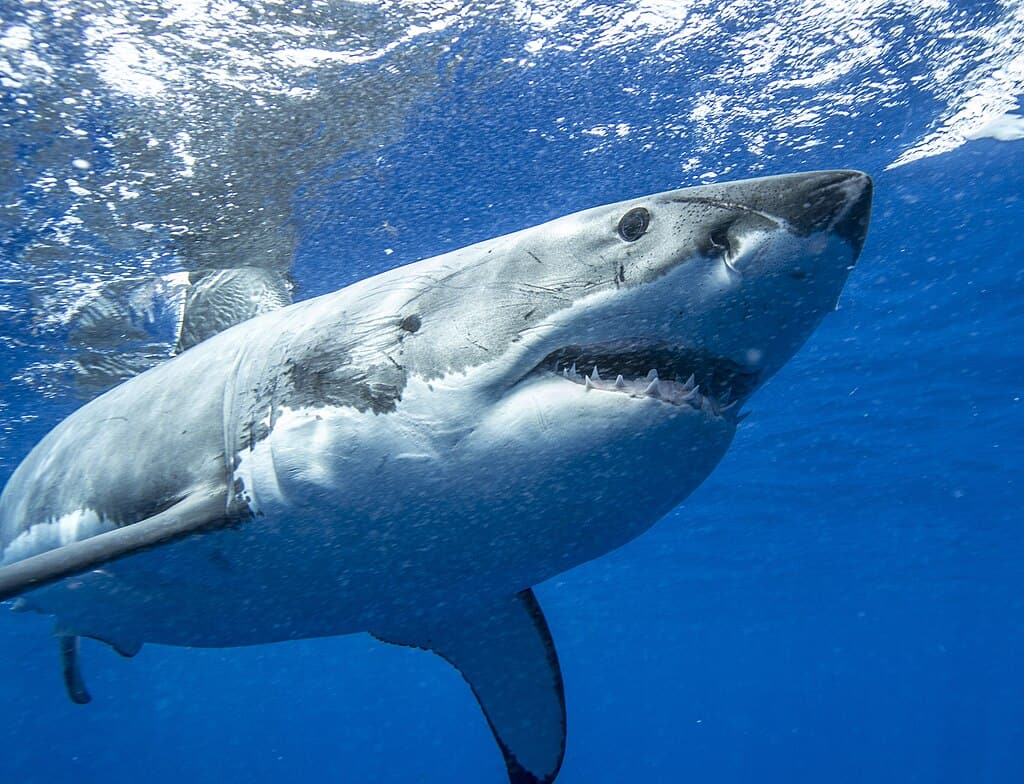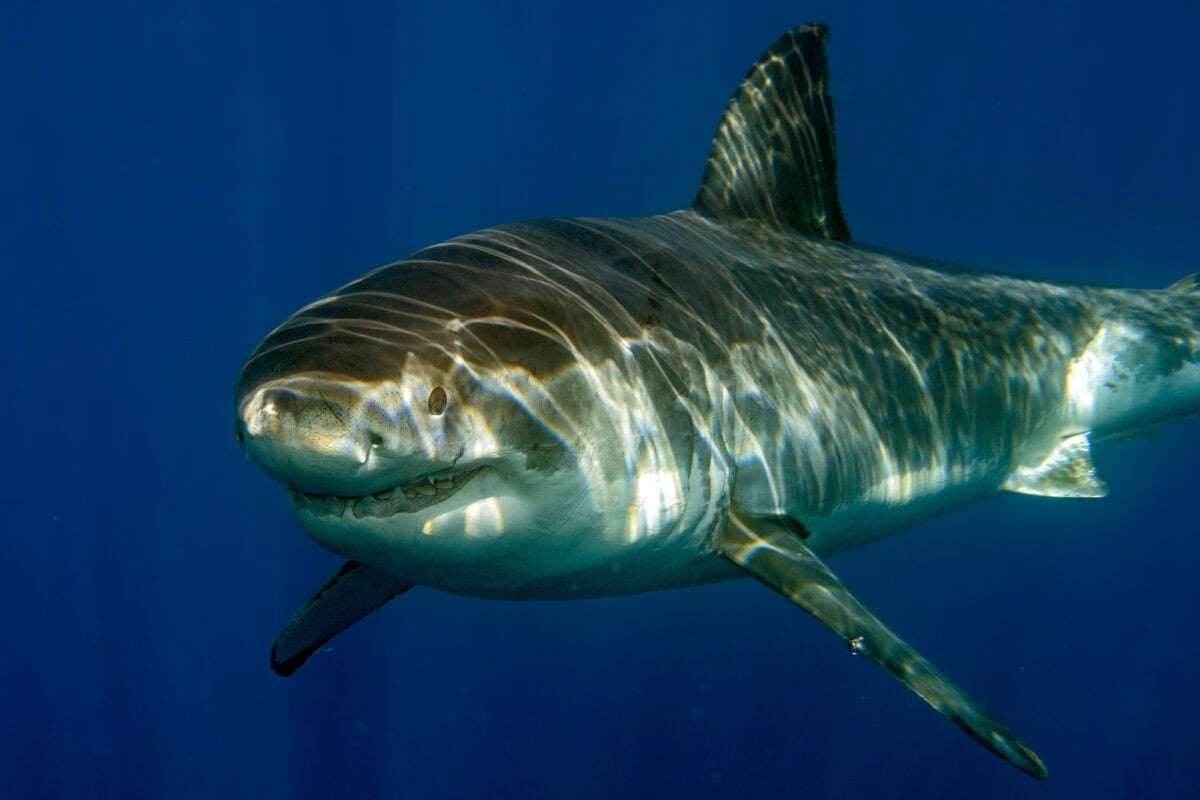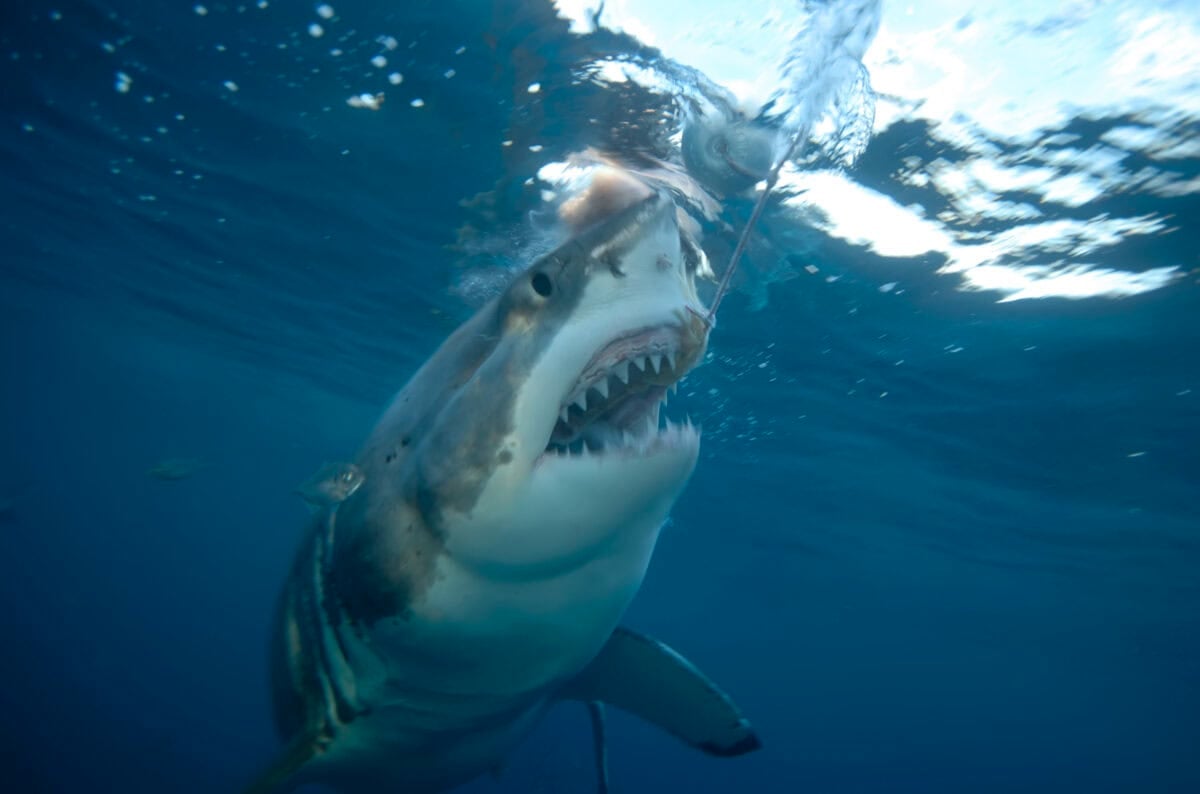 Great white shark, Carcharodon carcharias, with open mouth. False Bay, South Africa, Atlantic Ocean. Image via Depositphotos.
Great white shark, Carcharodon carcharias, with open mouth. False Bay, South Africa, Atlantic Ocean. Image via Depositphotos.
The enigmatic nature of the great white shark has long fascinated both scientists and the general public alike. Known for their fearsome reputation and impressive size, these apex predators are an essential part of marine ecosystems. However, recent studies reveal a surprising trend: great white sharks are migrating to colder waters. What could be causing this unexpected shift in their migratory patterns? In this article, we’ll delve into the factors influencing these movements and what they mean for marine conservation efforts.

 “Great White Shark” image by Jeremy Bishop via Pexels.
“Great White Shark” image by Jeremy Bishop via Pexels.Great white sharks, scientifically known as *Carcharodon carcharias*, are one of the largest predatory fish in the ocean. Commonly found in cool, coastal waters, they are predominantly located in regions like Australia, South Africa, and the coasts of the United States. Despite their notoriety, much about their biology and behavior remains shrouded in mystery, adding a layer of complexity to understanding why their migratory habits might be changing.


Historically, great white sharks migrate seasonally to follow their food sources. Warm waters have been linked with abundant food supplies such as seals and sea lions, which are staple components of their diet. Typically, these sharks have been observed moving from the western coast of the United States towards Mexico and then into the vast expanse of the Pacific Ocean.


Recent satellite tracking studies have highlighted a shift toward colder waters, marking a departure from their usual patterns. Some great whites are venturing further north into previously uncharted territories for them, such as the cooler waters off the coast of Alaska and even parts of the Arctic Circle. This trend raises several intriguing questions about what drives this change.


The most plausible explanation for this migratory shift is climate change. As ocean temperatures rise due to human-induced climate alterations, fish populations and other marine life relocate in search of optimal living conditions. As a result, great whites may be following their prey into cooler waters, adapting to these changing environmental conditions.


The marine ecosystem is highly interconnected, and shifts in one area can have ripple effects throughout. As prey species such as seals and fish move to cooler waters, great white sharks are likely adapting their migratory habits to follow these valuable food sources. This change in prey distribution could significantly influence the hunting grounds of these predators.


Migratory patterns in great whites are also linked to reproductive behaviors. Colder waters may provide more favorable conditions for mating and birthing, helping to enhance the survival rate of young sharks. These reasons could contribute to the shift observed in the species’ migratory behaviors.


The increased visibility of these migratory patterns can be attributed, in part, to advances in satellite tagging technology. These devices provide researchers unprecedented insight into the movements of oceanic creatures, revealing previously unseen behaviors.


Another potential factor influencing shark migration patterns is the alteration of ocean currents. As ocean temperatures rise, these currents, which play a crucial role in marine life distribution, may change routes, affecting sharks’ paths.


The migration of apex predators like the great white shark into new territories can alter local marine ecosystems. Their presence can change the population dynamics of both prey and smaller predator species, potentially impacting the biodiversity and health of these environments.


The migration of great whites into colder waters presents new challenges for conservationists. Protecting these species in unfamiliar territories where protective measures may not yet exist is crucial to maintaining their populations.


As great whites move into new areas, human interactions may increase. With more surfers, swimmers, and fishermen potentially encountering these predators, understanding and mitigating these interactions is necessary for safety on both sides.


Continued research is essential for understanding the long-term implications of great whites migrating to colder waters. Monitoring these patterns can provide valuable insights into how climate change is affecting marine life and highlight areas needing protection to preserve ecological balance.


The migration of great white sharks to colder waters is a testament to the dynamic and ever-evolving nature of Earth’s marine ecosystems. While climate change and shifting prey availability are key drivers of this trend, much remains to be studied. As we endeavor to understand these magnificent creatures better, it’s crucial to address the environmental factors at play and further conservation efforts to protect these apex predators and their oceanic habitats. By doing so, we can help ensure the continued health and diversity of the world’s oceans for future generations.
Latest posts by Esther Evangeline, MSc Zoology (see all)
